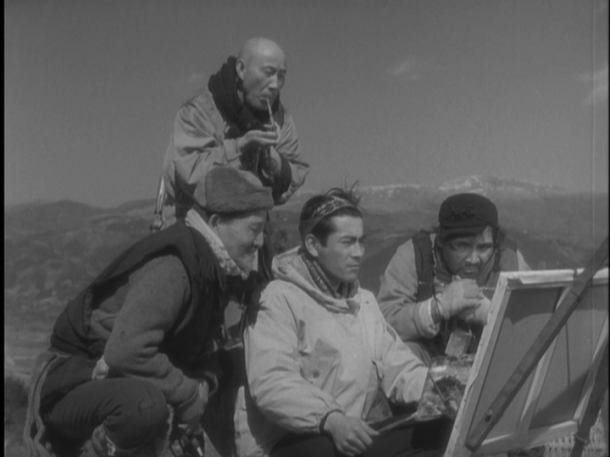
The Idiot (Hakuchi) (1951)
Directed by Akira Kurosawa
Shochiku Company
As a nearly lifelong fan of director Akira Kurosawa, The Idiot is a difficult film to review. Watching it was an incredibly frustrating experience, since major portions of the film have been lost, and it’s doubtful they will ever be found.
Kurosawa’s original cut of The Idiot ran about four and a half hours, and was intended to be released in two parts. However, the Shochiku studio bosses trimmed it down to a little less than three hours, which is the only existing version.

The Idiot (a.k.a. Hakuchi) is an adaptation of the novel by Fyodor Dostoyevsky. Kurosawa followed the plot of the novel fairly closely, but changed the setting from 19th-century Russia to postwar Japan.
Appropriately, the film takes place in Hokkaido, the northernmost of Japan’s main islands. The snowy landscapes give the film the look and feel of a Russian novel. Kurosawa was always preoccupied with weather (especially torrential rainstorms), and The Idiot is a beautiful portrait of a frigid and hostile environment.
The main problem with The Idiot is that it appears to have been trimmed down in a completely arbitrary fashion. The constant wipes (a technique which usually conveys a sense of excitement and forward movement in Kurosawa’s films) seem to always signify an elision in The Idiot. Characters will move from one place to another with no explanation, or the setting will change without warning. Watching The Idiot in its current form is sort of like reading a novel and skipping various chapters at random.

The Idiot is not a film I can properly review, but I will say this — if you have never seen a Kurosawa film before, make sure it’s not this one; however, if you are a Kurosawa fan, it is a film you must see at least once. It’s a gorgeous piece of work, with wonderful performances by the radiant Setsuko Hara, who also appeared in Kurosawa’s No Regrets for Our Youth (1946), and Masayuki Mori, who gives a haunting performance as the “idiot” of the title, a man deeply traumatized by war.
Kurosawa mainstays Toshiro Mifune and Takashi Shimura have less to do, but turn in dependably good work. I wrote in my review of The Quiet Duel (1949) that it might be Shimura and Mifune’s least interesting pairing for Kurosawa, but this one definitely is, mostly because they don’t really interact much.







